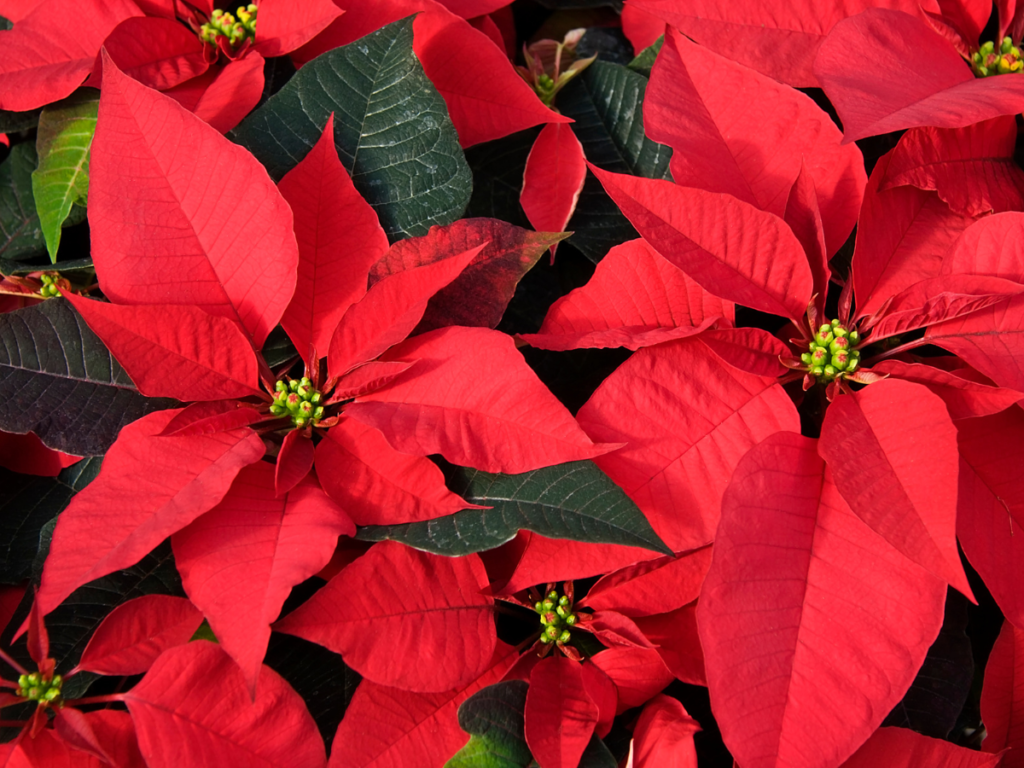Caring for a poinsettia plant requires attention to various factors to keep it healthy and vibrant. Poinsettias are popular plants known for their bright red (or other colored) leaves but they are not just for Christmas time, and if you look after them, you can keep them blooming all year round and grow them to be magnificent centrepieces for years. I currently own one that is over four years old that I have learned to look after.

They are not actually hard to look after, and with a little care and love, will thrive and bloom for you to enjoy.
- Placement: Place your poinsettia in a location with bright, indirect sunlight. Avoid direct sunlight as it can scorch the leaves and bracts. Keep it away from drafts, such as heating vents or doors, as sudden temperature changes can stress the plant.
- Temperature: Poinsettias prefer temperatures between 65-75°F (18-24°C). Avoid exposing them to cold drafts or extreme temperature fluctuations, as this can cause the leaves to drop.
- Watering: Water the plant thoroughly when the top inch of soil feels dry to the touch. Make sure the pot has drainage holes to prevent waterlogging. Discard any excess water in the saucer to avoid root rot. Overwatering or letting the plant sit in standing water can harm the roots.
- Humidity: Poinsettias thrive in moderate humidity levels. If your home is particularly dry, you can increase humidity around the plant by using a humidity tray or placing a shallow dish of water near it.
- Fertilizing: During the active growing period (spring to early fall), you can feed your poinsettia with a balanced, water-soluble fertilizer every two to four weeks. Once the flowering season is over, you can reduce the frequency of fertilization.
- Pruning: After the blooming season, you can prune the poinsettia to encourage bushy growth. Cut back the stems to around 6-8 inches from the base. New growth will emerge from these stems.
- Reflowering: Getting a poinsettia to rebloom is a bit challenging and usually requires mimicking natural light conditions. Starting around mid-September, you need to provide the plant with uninterrupted darkness for about 14 hours each night. This can be achieved by placing the plant in a dark room or covering it with a light-proof bag. During the day, it needs bright light as usual. Continue this regimen until the bracts begin to show color, usually around November or early December.
- Pests and Diseases: Poinsettias can be susceptible to pests like whiteflies, mealybugs, and aphids. Inspect your plant regularly and treat with appropriate insecticides if necessary. Make sure the plant has good air circulation to prevent mold and fungal issues.
Remember that poinsettias are sensitive to changes in their environment, so try to maintain consistent conditions. With proper care, your poinsettia can stay healthy and potentially re-bloom for many years to come and not just for few short weeks at Christmas.
It’s always worth remembering that poinsettia are toxic to pets, so it’s always best to keep them out of reach of their paws…